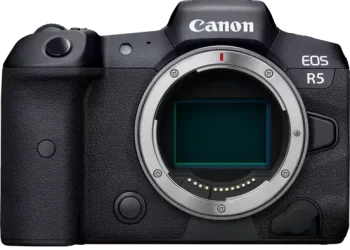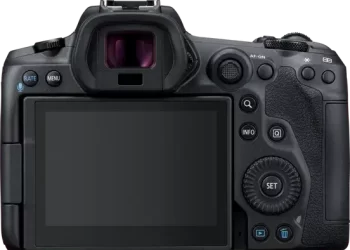In this article, I share my thoughts and an in-depth guide to the best landscape photography cameras of 2023, which should help you choose the right camera according to your need. And read here to know best lens and local length to use for landscape photography. And do not forget to keep hood for camera lens.
I cover my choices of camera from full-frame to mirrorless and share each camera’s key features, pros, and cons to help you make an informed decision.
The camera is an instrument that teaches people how to see without a camera.
~ Dorothea Lange”
As I have always said, “Landscape photography is a genre that focuses on capturing the beauty and brilliance of natural landscapes, including mountains, forests, beaches, and more.”
There is mixed thought in the industry that “camera is not that important, the lens is more important, or composition is more important.” Having said that, as a tech-savvy who is always on the hunt for a new product that will improve my craft, I am a big advocate for upgrading cameras from time to time.
Indeed, the right camera is crucial for capturing stunning landscapes. It can impact image quality, dynamic range, autofocus, faster frame rate, and advanced features such as real-time view.
Here are my camera gears including camera & lenses for travel and landscape photography.
Factors to Consider When Choosing the Best Camera for Landscape Photography
Here are 6 important points which you should consider to make the right decision,
A. Megapixel Count and Its Impact on Image Quality:
Megapixels determine the resolution of your images, and the higher the megapixel count, the higher the image quality. This is important for landscape photography or any other genre of photography where you need detail to crop an image or large printing.
B. HDR(Dynamic Range) for Capturing Vivid Colors and Detail:
Dynamic range refers to the range of tones a camera can capture, from the brightest highlights to the darkest shadows. A camera with high dynamic range (HDR) is important for landscape photography, where the goal is to capture a scene’s full spectrum of colors and details.
C. Autofocus for Capturing Moving Subjects in Landscapes:
Landscapes often contain moving pieces, such as clouds, water, and wildlife, and having a fast and accurate autofocus system is crucial for capturing these elements in your shots. Having said that, if you plan to use Tripod, and shoot big vistas, then autofocus is not that important.
D. Image Stabilization for Hand-held Shots:
IS helps reduce camera shake, leading to blurry images, especially when shooting in low light, with a long lens or hand-held slower shutter speed. It is good to have a feature to consider when choosing a landscape photography camera.
E. Video Capabilities for Capturing Timelapse:
Some landscape scenes, such as sunrise, sunsets, storms, and waterfalls, are best captured in motion. If the camera has video capabilities, it can help you fasten your process to make a video from photos in post-processing and capture some moments to the memory of location or behind-the-scene for social media.
F. Weather Sealing for Shooting in Extreme Conditions:
Moody Landscape photography often occurs in rugged environments, such as mountains, forests, snow, and beaches. A camera and lens with weather sealing can protect it and ensure you can continue shooting even in inclement weather.
Based on my experience, weather sealing is must to have requirement. It will give you an extra edge to push yourself in harsh conditions.
Top Landscape Photography Cameras of 2023
Each camera is considered based on its key features, performance, and value for money to help you choose the right one for your needs.
Every photographer is unique, with different budgets and needs, and choosing a camera that fits your budget and your style of photography is essential.
Note: You need more than the camera to capture the best landscape. You need to buy lenses and essential accessories for landscape photography, including tripods, filters, and more.
Here are, my top recommendations for 2023 include the Canon EOS R5, Nikon Z7 II (will update soon), Sony Alpha a7R IV, and Fujifilm GFX 100.
Canon Mirrorless R5 – The Ultimate Camera for Landscape Photographers

Key features and specs:
- The Canon Mirrorless R5 is a top-of-the-line camera for landscape photography, featuring a 45-megapixel full-frame CMOS sensor and an advanced autofocus system.
- It also has in-body image stabilization, perfect for capturing sharp shots in low light or hand-held short for up to 5 seconds.
- Other features which I like and use most are high-speed burst shooting, 8K video recording, eye detection (both people and animals), and a 3.2-inch Vari-Angle Touchscreen LCD.
- Additionally, the camera is equipped with weather sealing to protect against the elements and a wide range of customization options for maximum control over your shots.

Pros and cons:
- The Canon Mirrorless R5 is a versatile camera perfect for both stills and video.
- It has a high-quality sensor that produces stunning images with rich detail and color.
- The camera’s advanced autofocus system also ensures you get sharp images even when your subject is moving.
- Nothing is perfect in this world, right? So this camera is costly for hobbyist photographers, or you have a low budget.
Note: Consider Canon R6 mirrorless camera with low cost and almost check most of the essential features.
Sony Alpha 7R IV – Another Mirrorless Wonder for Landscape Photographers

Key Features and Specs:
- The Sony Alpha 7R IV has a 61-megapixel full-frame sensor, making it one of the highest-resolution mirrorless cameras available in the market.
- Its advanced autofocus system provides fast and accurate focusing, even in challenging lighting conditions, and its compact design makes it ideal for travel photography.
- Also, the camera is equipped with a wide range of customization options for maximum control over your shots. Its high-quality video capabilities make it versatile for both stills and video.

Pros and Cons:
- The Sony Alpha 7R IV is a compact and lightweight camera that’s ideal for travel and landscape photographers who want to take their gear on the go.
- Its high resolution and advanced autofocus system ensure that your images are sharp and detailed, while its compact design makes it easy to carry and handle.
- On the downside, the camera’s high resolution can lead to longer processing times and large file sizes.
Whether you’re a pro or just starting out, the Sony Alpha 7R IV is a camera that will help you take your landscape photography to the next level. You can also check out Sony A1, best camera in Sony lineup.
Fujifilm GFX 100 – The Medium Format Marvel for Landscape Photographers

Key Features and Specs
- GFX 100 has a 102-megapixel medium format sensor, which I believe is the maximum megapixel available in the market. This allows for incredible detail and depth in images, making it the perfect choice for landscape photography, as you can change the composition by cropping in post-processing.
- The fast and precise autofocus system helps you capture the perfect shot every time.
- Despite its impressive specifications, the GFX 100 is surprisingly compact and portable, making it an ideal choice for outdoor and landscape photographers.
Pros and Cons
- The GFX 100 is the perfect blend of advanced technology and versatility, offering stunning image quality and high-quality video capabilities.
- As I said, its compact size makes it easy to carry with you on any adventure.
- Again, it is one of the most expensive options on the market. However, for serious landscape photographers, it is a small price to pay for the level of quality and versatility that the GFX 100 provides.
Last but not least,
Olympus OM-D E-M1 Mark III

Key Features and Specs
- This compact sensor (20.4-megapixel Micro Four Thirds) delivers impressive image quality, making it an excellent choice for landscape photography.
- The autofocus system is fast and accurate.
- This camera is built to withstand harsh conditions, making it perfect for outdoor photography.
Pros and Cons
- The compact size and weather-sealing of the OM-D E-M1 Mark III make it an ideal choice for landscape photographers who need a camera that can handle various conditions.
- One potential drawback of this camera is its smaller sensor, which may not deliver the same level of detail as other cameras on this list, like the Sony Alpha 7R IV and Canon R5. However, a megapixel is not everything. If you do not need to print large billboards, the OM-D E-M1 Mark III is an excellent choice.
Comparison Chart of the Best Landscape Photography Cameras
| Camera | Key Features | Pros | Cons |
|---|---|---|---|
| Canon R5 | 45-megapixel full-frame CMOS sensor, advanced autofocus system | Versatile for stills and video, stunning image quality | Higher cost compared to other options |
| Sony Alpha 7R IV | 61-megapixel full-frame sensor, advanced autofocus system | Compact design, high-quality video capabilities | Higher cost compared to other options |
| Nikon D850 | 45.7-megapixel full-frame sensor, advanced autofocus system | Durable build, fast shooting speed | Slightly larger and heavier compared to mirrorless options |
| Fujifilm GFX 100 | 102-megapixel medium format sensor, advanced autofocus system | Compact size, high-quality video capabilities | Higher cost compared to other options |
| Olympus OM-D E-M1 Mark III | 20.4-megapixel Micro Four Thirds sensor, advanced autofocus system | Compact size, weather-sealing for shooting in harsh conditions | Less resolution compared to full-frame options |
Conclusion
2022 was an excellent year; we saw a range of fantastic landscape photography camera gear that caters to the practical needs of different photographers. Whether you’re a professional or a hobbyist, you’ll find the perfect camera for capturing stunning landscapes that meets your needs and budget.
You may prefer a full-frame sensor, while others may opt for a compact size. Some may prioritize image quality, while others may value video capabilities.
When choosing the best landscape photography camera, you must consider your individual needs and preferences. I like the Canon camera and have been using it for over a decade. Canon builds an excellent menu system, touch screen, and ergonomics.
Now, it’s time to go out and start capturing breathtaking landscapes. With the right camera, you can capture stunning landscapes and create images that will last a lifetime.
Don’t forget to share your choice of a camera in the comment section.
Note: I will update this post when I see a new camera that I can recommend to you. Having said that, please check the camera manufacturer’s websites for new releases, as technology is moving faster than we think.











